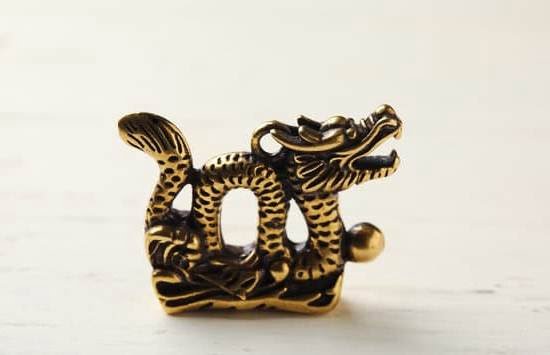Introduction
Feng shui is a traditional Chinese system that uses the energy of space to create harmony and balance. It assesses energy flow in an environment and can help to identify areas of stagnation, imbalance, and disequilibrium. The wood element refers to the element of growth and renewal within feng shui. The wood element can be symbolically represented through plants, wood furnishings, wood artwork and other forms of natural elements. This element is associated with the color green, which can be used to create a soothing atmosphere that encourages personal growth and development.
In feng shui, the presence of the wood element creates positive energies that keep people motivated while also attracting abundance into their lives. This particular element is particularly important when incorporating areas like offices or homes as it allows for continued productivity and success in business ventures by creating space for creativity to flourish. Additionally, it signifies new beginnings and stimulating ideas which are essential when allowing new possibilities to present themselves. By adding this element in a space you are able to invite fresh energy into any situation as well as promoting feelings of hope for a brighter future.
Historical Background
The Wood element in Feng Shui is an integral part of the five elements system derived from Chinese culture. This system was then adapted and developed into what has become contemporary Feng Shui. Based on 5 key elements—Wood, Fire, Earth, Metal, and Water—Feng Shui teaches a person how to bring harmony to their environment. It emphasizes the idea that our homes should be designed so that energy can flow freely, creating balance in our lives.
The history of the development of this ancient Feng Shui art dates back more than 5000 years to Neolithic China when it was first practiced by people living in villages around the Yellow River valley. They soon discovered how their daily lives were improved with properly organised spaces and noticed how natural energies helped them feel better and function more efficiently. The practice then evolved with wise Chinese sages as they discovered various techniques that brought lost harmony into their homes and other places where people interacted including business enterprises.
Today, this art profoundly influences many aspects of modern life including interior design where the wood element plays an important role in structuring a positive space composition while maintaining balanced energy flow. The wood element generates energy through its beauty even at times when it might appear dormant or forgotten; its metaphysical power enables us to constantly purify our environment by connecting us to nature in various forms like fabric patterns, furniture or decorations.
Scientific Explanation
The Wood Element in Feng Shui is believed to bring positive and growing energy, as well as abundance into a home. This energy is thought to come from the element’s close spiritual connection with nature and life. According to scientific principles, wood is associated with the East sector of a building and brings strong vibrant energy into any space it is found in. Wood represents the season of spring, renewal and growth which allows for personal transformation. Color-wise green and blue are typically seen as associated with this element since these colors can symbolize balance, peace, and relaxation.
Scientifically speaking, Wood represents the movement of Chi in Feng Shui. Within this framework each Element can store or capture Chi within itself while simultaneously activating other elements when put together. Wood acts as an activator for Fire through its fuel and sustains Earth by providing it with nutrition in order to grow plants which would not be able to do so without it sustainably creating their cells. Additionally, Wood nurtures Metal by providing oxygen for it oxidization process that creates new metal elements.
How To Incorporate The Element
Incorporating the wood element into home decor is an easy way to evoke harmony and balance according to the principles of Feng Shui. The most common colors associated with this element are brown, green, and blue. Furniture such as tables and chairs made from wooden materials are a great way to bring the energies of the elements into your space. Additionally, you can use natural items like branches, stones, and flowers to bring in a more soothing feel. Plants with leaves and stems also help to stimulate Wood energy in your home or office. Decorative items such as paintings, sculptures, or clocks featuring wood or wood-like imagery are also great for adding a touch of Wood energy. To further emphasize this element, hang bamboo curtains around windows or try placing statues of animals such as dragons or horses near entryways. Other ideas include introducing more earth tones throughout your interior design by opting for natural woods like cedar which carries calming energies with it throughout your home environment. Finally, slow down spending money on unnecessary possessions as unnecessary possessions create clutter which is seen as an obstruction against luck when it comes to greater financial prosperity according to Feng Shui principles.
Benefits of Incorporating The Element
The Wood Element in Feng Shui is often used to represent life and growth. Incorporating the Wood Element into a space can bring increased energy and creativity, as well as improved productivity. This element is associated with flexibility, resilience, strength, and determination. It inspires people to reach their goals through hard work and dedication. Additionally, it can bring clarity of thought for those looking for direction or are feeling indecisive.
The Wood Element also encourages self-expression and flexibility in problem solving by encouraging harmony between different aspects of one’s life. This makes it easier to approach difficult situations with a positive attitude while maintaining determination and resilience through any hardship that may arise. Bringing this element into a space can create a peaceful atmosphere that invites collaboration among people working together to develop innovative solutions or complete challenging tasks faster.
Using the Wood Element in Feng Shui promotes vibrant energy that stimulates fertility, health, trustworthiness and success. Furthermore, it fortifies relationships as it allows family members to discuss issues openly with one another without fear of judgment or criticism. Ultimately, incorporating this element leads to an increase in productivity by creating motivation for individuals within their workspace so they can complete their tasks efficiently with enriched energy and clarity of mind.
Examples
The Wood Element in Feng Shui symbolizes growth, creativity, ambition and fertility. In many cases people use the Wood Element to bring these attributes into their home design. For example, many people incorporate the attraction of wood into their living space through furniture or accessories made of wood with lighter tones or wood-toned hues, as this brings a sense of vitality and life to a home. Additionally, plants can be used in both indoor and outdoor spaces to enhance the calming energy of renewal and growth when integrating Feng Shui principles – think of it as harnessing the power of nature for balance and harmony. Many people use several medium-sized trees or lush clusters of plants around windows to activate and stimulate areas inside. Before & After photos from people who have applied these techniques to their homes typically show an increased liveliness within the space based on its new “woody” look and feel!
DIY Ideas
The Wood Element in Feng Shui is associated with growth, expansion, and vitality. Practitioners believe that harnessing the power of the Wood Element can bring about social success, wealth, prosperity, and health. Within a home or office space, the Wood Element brings an energy of balance and harmony.
DIY Ideas for incorporating the Wood Element into your home decor include adding natural wood accents such as with furniture pieces, mirrors, artwork and accessories. Plant life also carries this element so creating a green environment with natural plants (real or artificial) throughout the spaces helps bring balance to any room. Natural materials like bamboo can be used make baskets and rugs or to build walls or room dividers. Incorporating wood textures through choice of hardwoods in flooring is another great way to express the energy of this element in a subtle yet beautiful way. Finally, bringing nature indoors by decorating windowsills with terrariums or jars filled with branches provides an enchanting and positive touch to any space.
Wrapping Up
The Wood Element in Feng Shui is closely associated with growth, development, and movement. It focuses on the flow of energy (chi) within a space and can be used to energize or reduce the Yang energy which can create too much stimulation. It is represented by vibrant colors such as green and warm earth tones, plants and other forms of nature, rectangle-shaped furniture and doorways, as well as artifacts made of wood or bamboo. To use it effectively in a space, one must understand its symbolism and how to apply it for both physical health and spiritual/emotional balance. Applying the principles of Feng Shui can help create an environment that supports the flow of chi just as natural elements do in nature.
For those wishing to learn more about the Wood Element in Feng Shui, there are many resources available online such as books, articles, and videos from practitioners. Additionally, people may want to consider attending workshops or classes with experienced experts to gain deeper understanding of this ancient practice.

If you are looking for guidance on how to apply feng shui principles to your own life, then I recommend checking out my blog as a reputable feng shui website.





